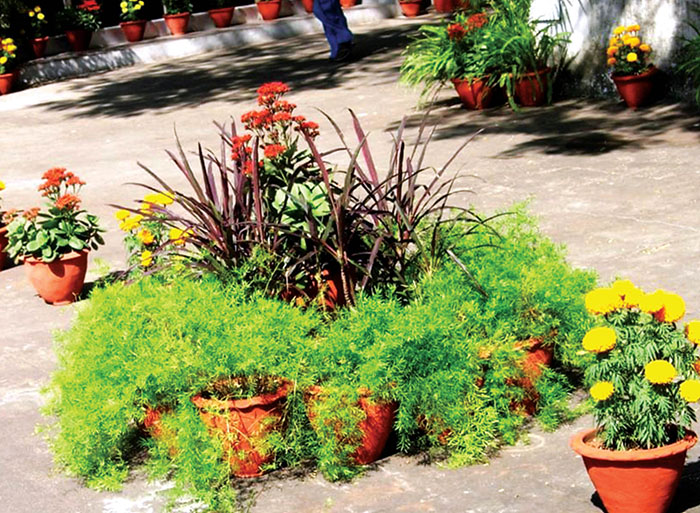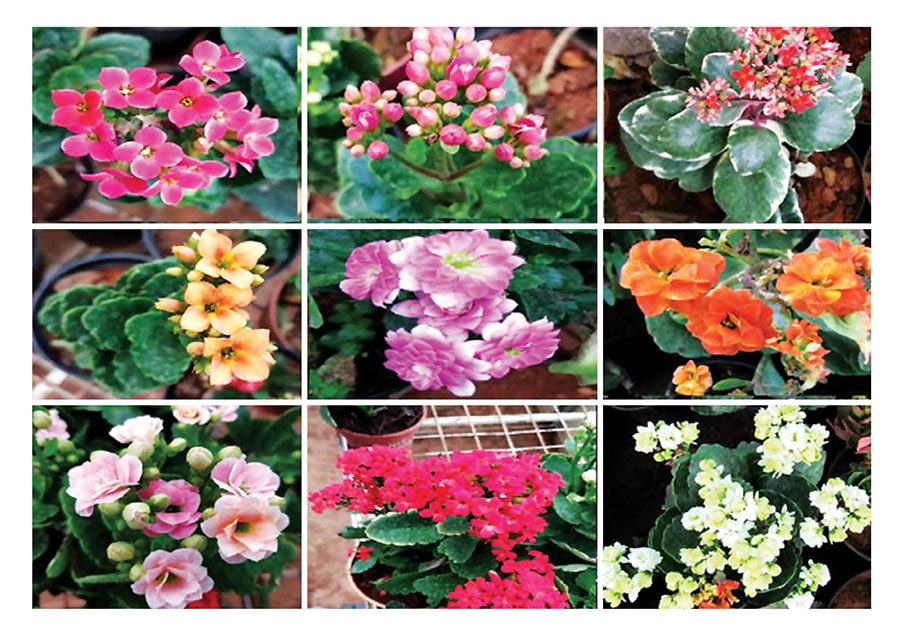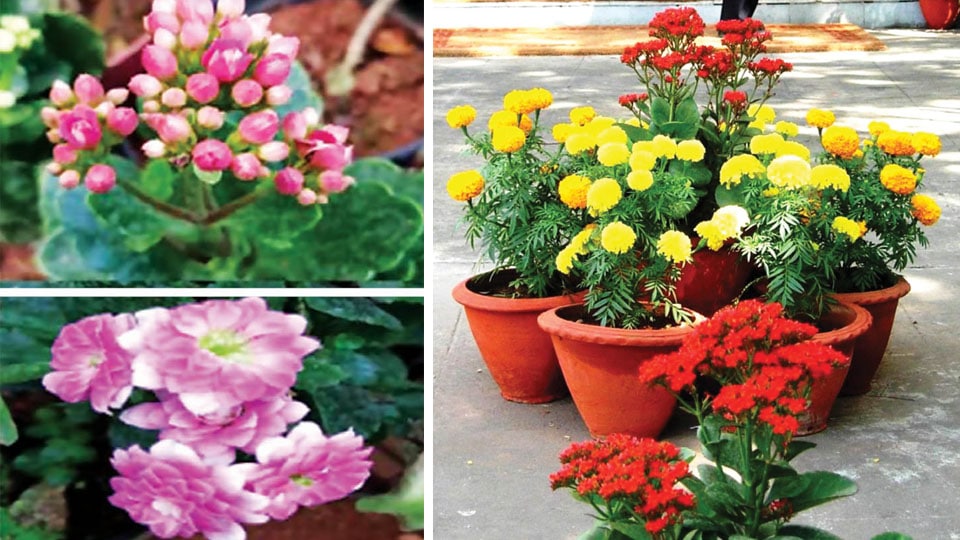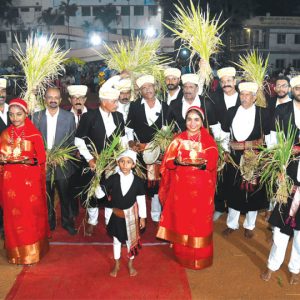Text & photographs by Dr. Mahadeswara Swamy, Scientist
Mob: 97429-91057 e-mail: [email protected]
During the late winter, local plant nurseries are flooded with an innumerable variety
Originally from Madagascar, Kalanchoes are succulents, meaning they have thick stems and fleshy leaves with abundant water stored in them to endure drought conditions. The genus Kalnchoe includes more than 100 species and Kalanchoe blossfeldiana is the most popular one with many hybrids valued for interesting leaf forms and multi-coloured blooms. English names are ‘Christmas kalanchoe’, ‘Flaming Katy’, ‘Florist kalanchoe’ and ‘Madagascar widow’s-thrill.’ The generic name Kalanchoe is derived from ‘Kalanchauhuy’, a Chinese name and the specific epithet blossfeldiana is in honour of German Botanist Robert Blossfeld, who first introduced the plant to the rest of the world in 1932.
Kalanchoe blossfeldiana is a small evergreen compact bushy plant, perennial in character, but generally treated as an annual growing to a height of 1 – 1.5 ft. It branches from the base. The fleshy leaves are ovate oblong in shape and lie opposite in pairs on stems. The most attractive part of the plant is the inflorescence classified as ‘pniculated bracteates cyme.’

Clusters of tiny, tubular flowers held on top of long leafless stalks form the terminal portion of the branches like an umbrella giving it a spectacular appearance. Attractive dwarf varieties with various leaf forms and blooms of orange, pink, yellow, white etc., are now available. However, the best bet is the traditional red variety “Red Star” (the mother plant in my view) for which the description is given.
Gardening
Kalanchoes are best grown during winter season using ordinary soil with a small quantity of farmyard manure (FYM) or dried cow dung. However, the soil must be loamy with good drainage. They can be easily propagated by stem, leaf or terminal cuttings (small branches) during the moist season. The recommended soil mixture is 1:1:1 (sand+red soil+FYM or a mixture of cow dung manure and leaf mould) with half a teaspoonful of bone meal and a pinch of lime if the soil is acidic). The cuttings can be raised in containers directly or in flower beds. No transplantation is necessary. Being succulents they do not need much water. However, copious watering during the growth season is useful. They should be placed in a sunny position for flowering and their bloom is dependent on the length of the day as they need longer dark period. They take almost 3-4 months to flower. But the final display is worth the wait. Though they are tropical in nature they need only moderate light and temperature and get scorched if exposed to the hot sun.

Useful Tips
- They are suitable for pots, windowsills, flower beds, edges, rockeries, borders and lawns.
- They are good indoor plants too.
- ‘Kalanchoes’ make best eco-friendly gift items.
- Raise the plants during August end or first week of September. Keep them in the shade and water them properly. As they need moderate light and temperature, keep them in an open sunny place from the beginning of November. They require at least 4 weeks of short days (long period of darkness) for flowering. The plants flower during December end – January and blossom continuously for many weeks thereafter.
- Do not water the plants excessively. Restrict watering once the buds appear. Allow the soil to dry in between watering.
- Propagate new plants from cuttings every year instead of using the old plants to re-flower. Terminal cuttings are the best.
- Once the flowering season is over pinch off the dead heads and keep the plants in a shady area. Now they need little care and even if you water them after long intervals they remain healthy.
- In September, procure one plant or a cutting which you can multiply into hundreds. They never fail to give good results.
- The Kalanchoe plant is toxic to dogs and cats (pets), if consumed.
- The ‘Red Star’ variety is one of the most attractive and easily grown plant; and makes for a spectacular display in plant arrangements as they are proved to be a great companion for flowering annuals, especially marigolds and foliage plants. You will be charmed by these red wonders. I had grown these starry florals in hundreds & used for decorating the venues hosting several international functions in my parent institution.
Where to see
Many varieties of Kalanchoe are right now sold in plant nurseries.








Recent Comments